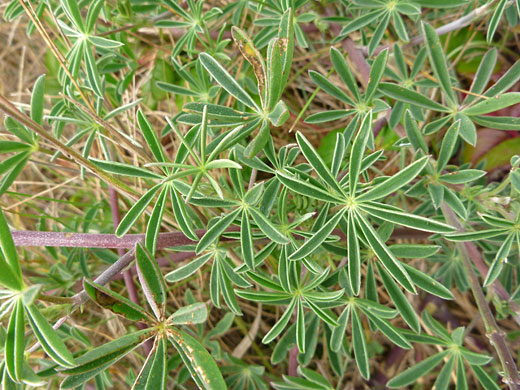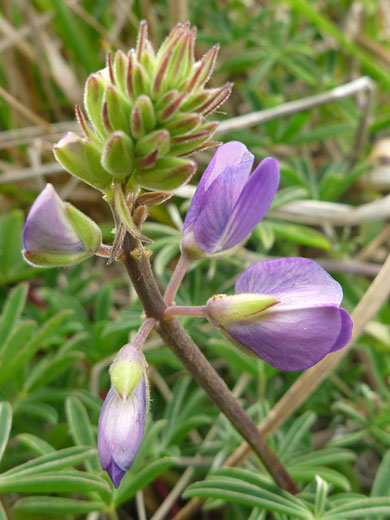Common names:
White-leaf bush lupine, silver lupine
Family:
Scientific name:
Lupinus albifrons
Main flower color:
Range:
California and west Oregon
Height:
Up to 15 feet
Habitat:
Chaparral, open woodland, coastal scrubland; up to to 6,500 feet
Leaves:
Divided into 6 to 10 leaflets, the largest 1.8 inches long
Season:
March to July
Features of lupinus albifrons, a perennial, include ciliate hairs on the upper margin of the keel petal, light hair covering on the back of the banner petal, and lack of lobes at the base of the keel. Plants are large and shrub-like, often many feet high and wide, and the reddish stems, the palmate leaves and the calyx lobes have a covering of short, silvery hairs. Leaves are palmately divided into narrow leaflets, typically nine, often folded up along the axis. They grow at the base and along the stems.
The elongated inflorescence extends for up to 12 inches at the top of the stems; flowers are attached by short stalks, and are often arranged in whorls of three to four. Petals are colored purple to bluish purple, with a yellow to white patch (ageing to purple) at the center of the banner. There are several varieties of lupinus albifrons, differing in such aspects as plant height, leaf hairiness and bract length. Plants are found in coastal regions and on the inland hills.
The elongated inflorescence extends for up to 12 inches at the top of the stems; flowers are attached by short stalks, and are often arranged in whorls of three to four. Petals are colored purple to bluish purple, with a yellow to white patch (ageing to purple) at the center of the banner. There are several varieties of lupinus albifrons, differing in such aspects as plant height, leaf hairiness and bract length. Plants are found in coastal regions and on the inland hills.
All Contents © Copyright The American Southwest | Comments and Questions | Contribute | Site Map



